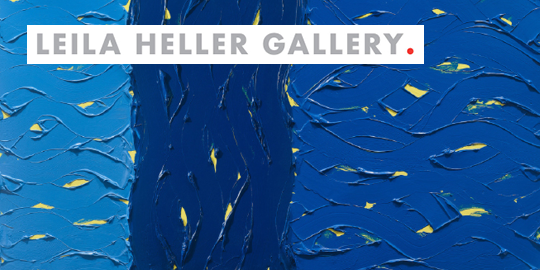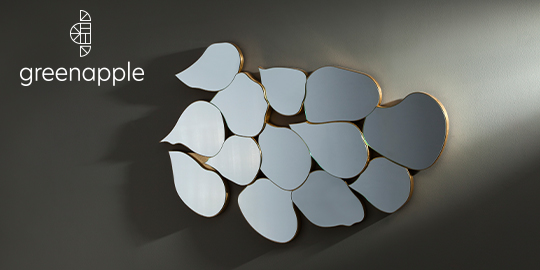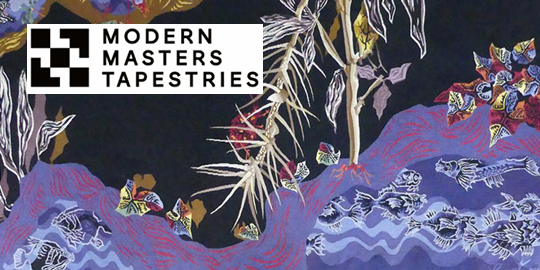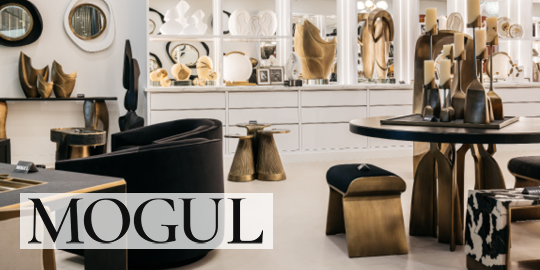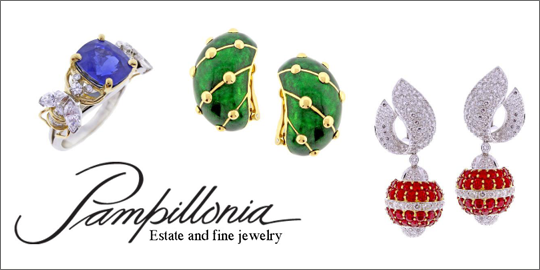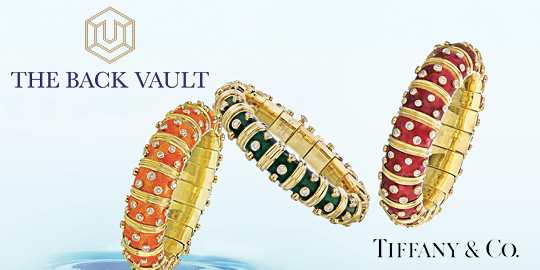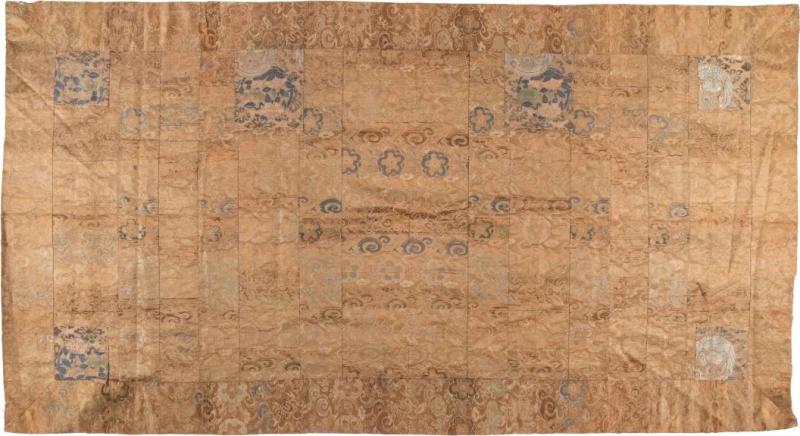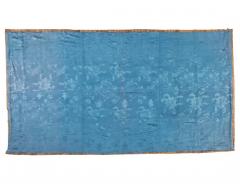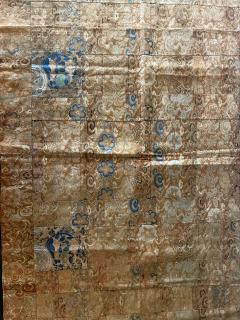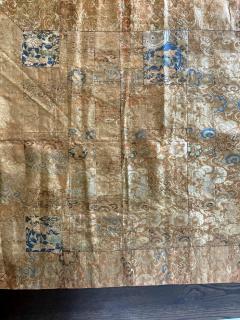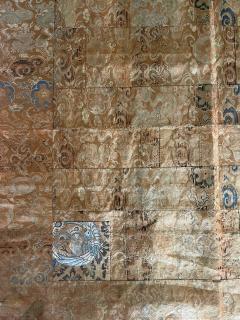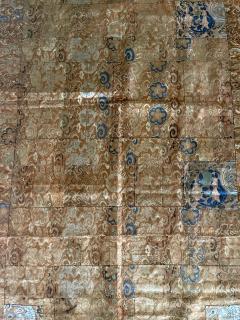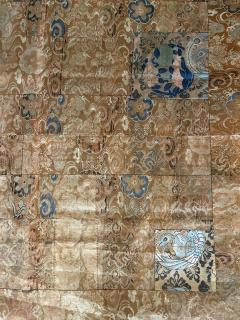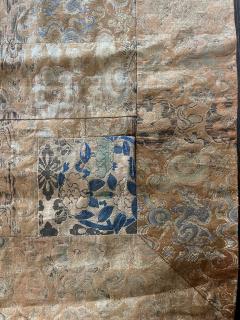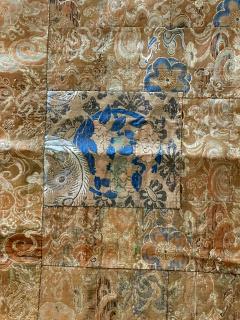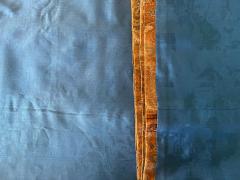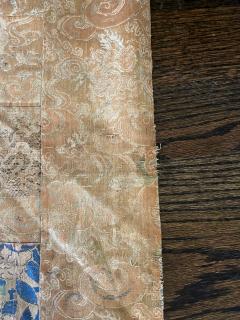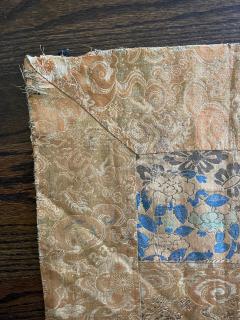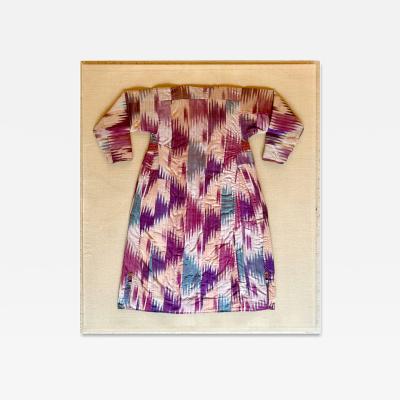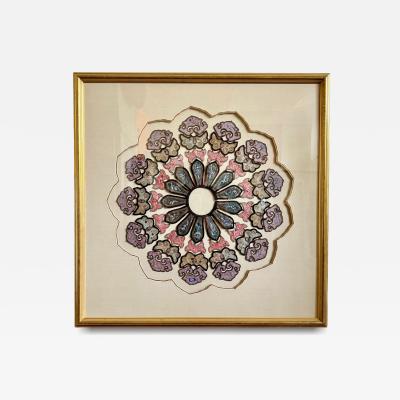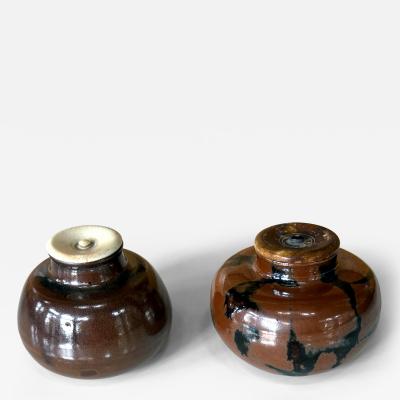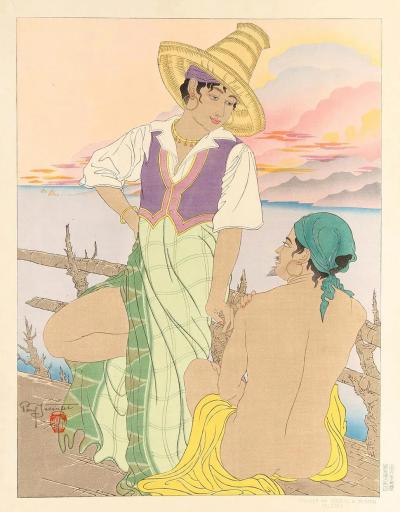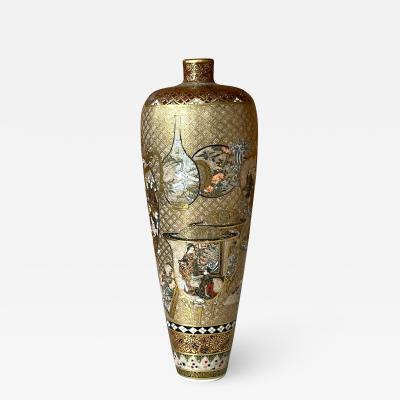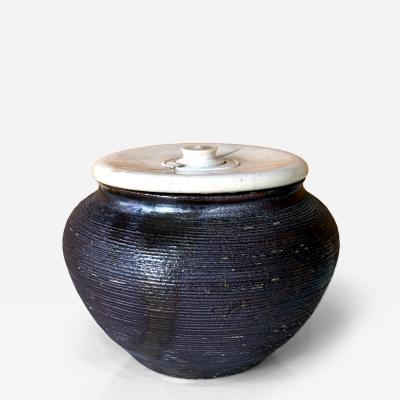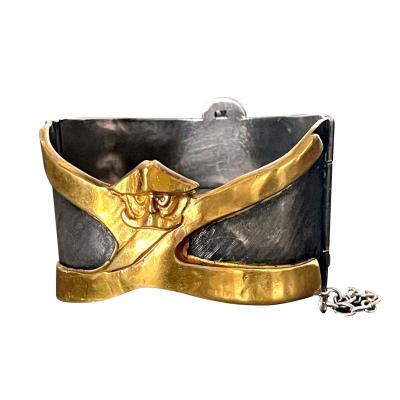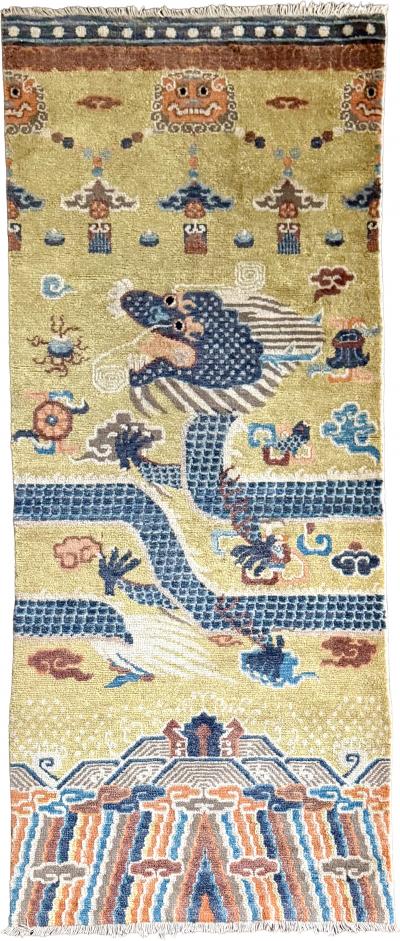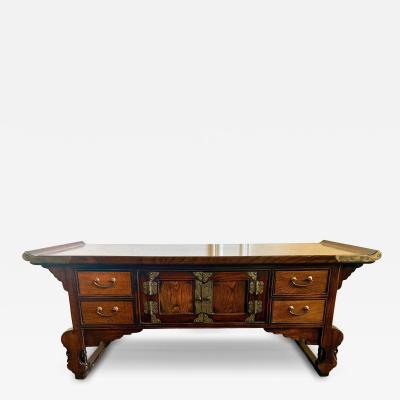- FINE ART
-
FURNITURE + LIGHTING
Shop By Category
Shop By Artist
- NEW + CUSTOM
- DECORATIVE ARTS
-
JEWELRY
Shop By Category
Shop By Artist
- INTERIORS
- MAGAZINE
Showrooms
Antique Japanese Brocade Kesa Monk's Robe Edo Period
Sold
Sold
-
Tear Sheet Print
- Save
- BoardAdd to Board
-
-
Description
A Japanese Kesa (Monk's Vestment) made from thirteen columns of patchworks of shimmering woven brocades. The elaborate motifs feature repetitive hibiscus flowers within framework of scrolling pattern. Mostly golden, the petals occasionally turned blue and with the nature of patchwork, creates a random and delightful visual effect. Six silk square in contrasting patterns and colors (blue and white) were sewn to the four corners and one longitude side of the Kesa, completing the symbolism of the robe. The four squares in the corners represent the Four Heavenly Kings (Shi Tenno); while the two slightly larger squares in the middle section represent two compassionate bodhisattvas. The patches were apparently taken from a silk panel with imagery of peonies and phoenix. The back of the Kesa was lined with blue silk with subtle woven pattern, which if of a later replacement as it often happened.
Kesa is derived from the Sanskrit word kasaya, meaning “dark colored,” a reference to the saffron colored robes worn by early Indian Buddhist monks. It is essentially a rectangular cloth originally sewn from patches of rags, being formless, it serves as a symbolism of the ascetic life of one's choosing. In Japan, since at least the Heian period (794–1185), the kesa has been worn by Buddhist priests as their outermost robe, draped over the left shoulder and attached under the right armpit. While it served some function of protection, it was more a signal of the wearer’s faith, and became increasingly elaborate over the centuries. During the Edo period (1600–1868), many kesa worn were patched together from exquisite silk brocade fabrics that were donated to the temples by members of the aristocracy, ruling military class, or wealthy merchants. By stitching the fabric into a patchwork robe, the monks concentrated their attention on the creation of a devotional work of art, every stitch part of an act of meditation on the teachings of the Buddha. The number of stripes (from 5 to up to 25) indicates the wearer’s rank and the occasion for which it was worn, the highest number of stripes usually only being worn by an abbot during festival ceremonies. The normal daily kesa generally have seven columns. The kesa on offer is more likely a ceremonial robe for special occasion. -
More Information
Period: 19th Century Materials: silk and brocade Condition: Fair. Wear consistent with age and use. Good antique textile condition. Some minor frays on the edges. One corner shows frays and thread losses as shown. Blue silk backing is of a later age. Creation Date: 19th century Styles / Movements: Asian, Traditional Patterns: Asian/Oriental, Geometric, Handmade Incollect Reference #: 640491 -
Dimensions
W. 77.75 in; H. 42.25 in; W. 197.49 cm; H. 107.32 cm;
Message from Seller:
Tishu, based in Atlanta, GA, offers a diverse collection ranging from Neolithic art to 20th-century collectibles, with a focus on Mid-century design, Japanese and Korean art, Asian textiles, and Contemporary Aboriginal art. Driven by a passion for timeless beauty, the gallery is open by appointment only and offers works that span 5,000 years of history. Reach them at 305-400-0561 or tishu@tishugallery.com.
Sold
Sign In To View Price
close
You must Sign In to your account to view the price. If you don’t have an account, please Create an Account below.
More Listings from Tishu View all 1072 listings
No Listings to show.
- Framed Antique Silk Ikat Chapan Robe Central Asia with Provenance
- Framed Chinese Antique Embroidery Silk Collar Qing Dynasty
- Set of Two Antique Japanese Ceramic Ko-Seto Chaires
- First Edition Woodblock Print Coucher de Soleil à Menado Celebes Paul Jacoulet
- An Early Gilt Bronze Necklace by Line Vautrin
- Antique Korean Wedding Bandaji Chest Joseon Dynasty Original Invoice
- Exquisite Japanese Satsuma Vase by Seikozan
- Antique Japanese Ceramic Tanba Chaire with Lid
- French Art Bronze Bracelet by Line Vautrin
- Antique Chinese Ningxia Tibetan Dragon Pillar Rug Qing Dynasty
- A Punu Granary Door Panel on Custom Stand with Provenance
- Articulate Bronze Brooch "Pergatoire" by Line Vautrin
- Fine Antique Korean Scholar Desk Ch'aeksang Joseon Dynasty
- Frame Fine Embroidered Chinese Court Lady Casual Robe Qing Dynasty Provenance



